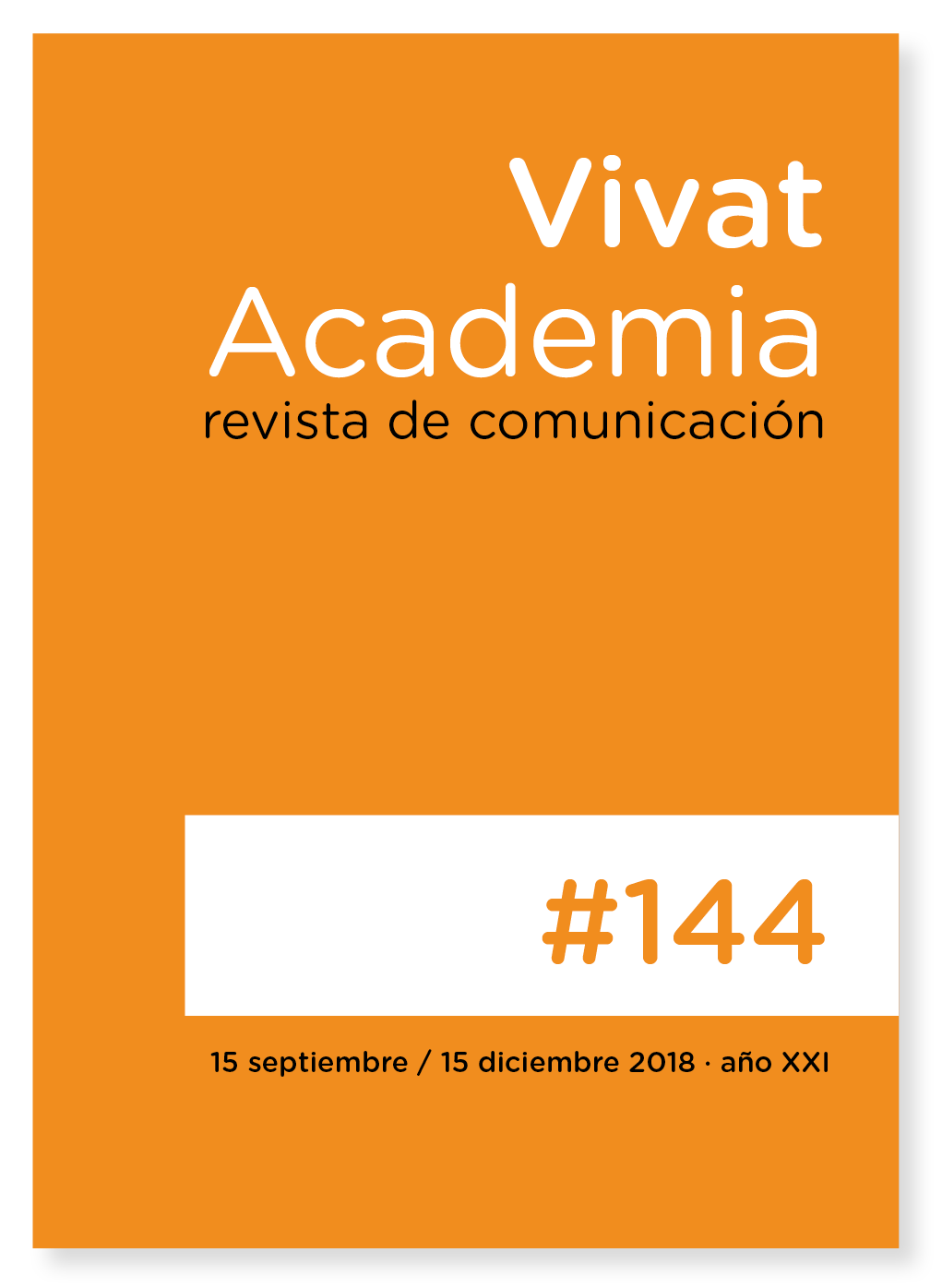Construcciones y transgresiones de la música en las series de ambientación histórica
Contenido principal del artículo
Resumen
La música desarrolla un papel esencial en la experiencia de visionado del espectador. Aunque en el relato audiovisual la imagen es el foco consciente de la atención, la música aporta una serie de efectos, sensaciones o significaciones que aportan valor a la narración y se proyectan como parte del discurso visual. Dentro de las funciones de la música audiovisual destaca la de crear atmósferas convincentes de tiempo lugar. Esta función de “color local” adquiere particular relevancia en las series de época debido a su posibilidad de dotar de realismo a su ambientación. En un momento en que las producciones televisivas han incrementado su calidad técnica y artística la selección/creación y empleo de la música ha adquirido una especial proyección en la construcción del relato audiovisual. En este sentido el objeto del presente trabajo ha sido el de efectuar una aproximación al uso de la música en las series de época, especialmente en lo que se refiere a los temas preexistentes. Una aproximación que ha permitido señalar diversas tendencias en la concepción del scoring atendiendo a su fidelidad.
Descargas
Detalles del artículo
Citas
Altman, R. (2007). Silent Film Sound. New York: Columbia University Press.
Brown, R. S. (1994). Overtones and Undertones: Reading Film Music. Berkeley: University of California Press.
Calderón, D.; Gustems, J. & Duran, J. (2016). La música y movimiento en Pixar: Las UST como recurso analístico. Vivat Academia. Revista de Comunicación, 136, 82-94. doi: https://doi.org/10.15178/va.2016.136
Chion, M. (1993). La audiovisión: introducción a un análisis conjunto de la imagen y el sonido. Barcelona: Paidós.
Copland, A. (1988). What to Listen for in Music. New York: McGraw-Hill.
Gorbman, C. (1980). Narrative Film Music. Yale French Studies, 60, 183-203. doi: http://dx.doi.org/10.2307/2930011
Grow, J. (2014). Blood Brothers: Inside the Music of 'The Knick'. Rolling Stone. Retrieved from https://goo.gl/Yv15sp
Jancovich, M. & Lyons, J. (2003). Quality Popular Television: Cult TV, the Industry and Fans. London: British Film Institute.
Kelly, C. R. (2016). The Toxic Screen: Visions of Petrochemical America in HBO's True Detective (2014). Communication, Culture & Critique, 9(3), 1-19 (Early preview). doi: http://dx.doi.org/10.1111/cccr.12148
Lack, R. (1999). La música en el cine. Madrid: Cátedra.
Piñeiro Otero, T. (2016). Intentions and intersections of classical music in Bryan Fuller’s Hannibal (NBC). L’Atalante, 21, 177-189. Recuperado de https://goo.gl/3qXFph
Powrie, P. & Stilwell, R. (2006). Changing Tunes: The Use of Pre-existing Music in Film. Burlington: Ashgate Publishing Company.
Prendergast, R. (1992). Film Music, A Neglected Art. The history and techniques of a new art form, from silent films to the present days. New York: Norton.
Richardson, J. y Gorbman, C. (2013). The Oxford handbook of New Audiovisual Aesthetics. New York: Oxford University Press.
Samuels, D. W.; Meintjes, L.; Ochoa, A.M. & Porcello, T. (2010). Soundscapes: Toward a sounded anthropology. Annual Review of Anthropology, 39, 329-345. doi: http://dx.doi.org/10.1146/annurev-anthro-022510-132230.
Schafer R. M . (1993). The soundscape: our sonic environment and the tuning of the world. Rochester: Destiny Books.
Schwachter, J. (2010). The Sounds of ‘Boardwalk Empire’. Altantic City Weekly. Retrieved from https://goo.gl/1djX3s
Torelló, J. & Duran, J. (2014). Michel Chion in Audio-Vision and a practical approach to a scene from Andrei Tarkovsky’s Nostalghia. L'Atalante, 18, 111-117. Retrieved from https://goo.gl/d7PV3x
Visa Barbosa, M. (2011). Claves del éxito del personaje psicópata como protagonista en el cine. Vivat Academia. Revista de Comunicación, 116, 40-51. doi: https://doi.org/10.15178/va.2011.116
Whiteley, S. (2004). ‘Introduction’, en Whiteley, S., Bennett A. & Hawkins, S. (Eds.). Music, Space and Place: Popular Music and Cultural Identity (pp. 2-8). Aldershot: Ashgate.
Whittaker, Tom (2012). Mobile soundscapes in the quinqui film, In L. Shaw & R. Stone, (Eds.). Screening songs in Hispanic and Lusphone Cinema (pp.98-113). Manchester, Manchester University Press.
Winters, B. (2010). The non-diegetic fallacy: Film, music, and narrative space. Music and Letters, 91(2), 224-244. doi: 10.1093/ml/gcq019
Wright, R. (2003). Sore vs. Song: Art, Commerce, and The H Factor in Film and Television Music. In I. Inglis, I. (Ed.). Popular Music and Film (pp. 8-21). London: Wallflower Press.





